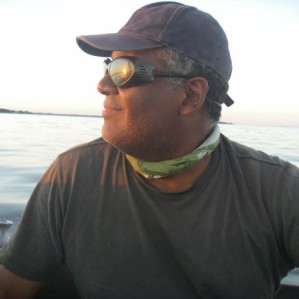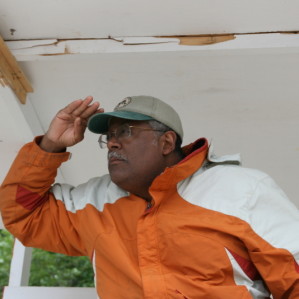
Chesapeake Bay Agreement furthers the myth of a winning Bay movement
The latest Chesapeake Bay Agreement charts a course extremely unlikely to result in what is needed to protect or improve regional waters. Yet politicians and environmentalists are taking a bow simply for signing it? Hear Fred’s Podcast here

Save all the seafood first?
In an ecosystem collapse scenario such as the one described in the proverbial and biblical story of Noah’s Ark, if I were in charge of protecting all the biodiversity I am not sure I would prioritize saving all the seafood first. Yet that is the guiding message behind much of the Bay oriented conservation rhetoric. Communities at risk from environmental threats, generally take a back seat in the Bay messaging of saving the Menhaden, Oysters, Rockfish, and Crabs. These delicacies that are iconic to the most privileged citizens are head and shoulders placed ahead of humanitarian concerns about the rising prevalence of flesh eating bacteria in our waters, toxic zones and the economic blight that that makes many urban areas populated by ethnic minorities, atrocious environmentally.
Environmental messages are framed in ways that bypass meaningful connection to the context for the local environment as experienced by communities with genuine and serious environmental problems. The weak substance inherent in the messaging assures that nobody could possibly draw the correlation that the movement cares about fairness, civil rights or human rights. By identifying itself as a nature loving movement first and foremost teh Bay movement shuns a connection to the plight of those suffering from the very worst environmental disparities. This blind spot has much to do with the inherent lack of grassroots sensibility in large-scale environmental cause movements generally, and I suspect it is part of why the movement is not very ethnically diverse. I think these movements care about people in a general way–but I don’t think they are able to raise funding around humanitarian messaging–unless it is to control population growth and immigration. The movement has unconsciously embraced messaging around themes that are inherently classist because they set aside any recognition that factors such as class, income or your actual circumstances influence one’s environmentalism.
So the environmental movement is generally mute about human suffering and environmental unfairness. It seeks to protect wildlife, and beautiful places and strongly favors protecting environmental privileges of those citizens with disposable income, who can take expensive vacation trips, invest in pricey gear, and enjoy the very best environmental opportunities that their money and social access can afford them.
The themes of clean air, water and unspoiled land are commonly portrayed as universal values that serve all in a public interest context. But the notion of an underserved community remains an indistinct one in spite of the clear truism that poorer neighborhoods are often environmentally degraded ones. Urban residents are encouraged to protect the Chesapeake Bay because they are upstream of the Bay but not for their own benefit. Environmentalists in the Bay movement spend lots of time trying to instill the values of “Saving the Chesapeake Bay” into communities that live adjacent to ruined streambeds with little or context for the Chesapeake Bay. The question “ what do you think the environment is” would likely seem remedial to most people who think of their environmentalism as a birthright. But they think it obvious that the environment is outdoors and in particular, it (the environment) consists of the natural things they like and are familiar with. Indeed many will simply explain that the environment is “nature” and therefore the “environment” is wherever raw nature can be found– which is usually disproportionately lacking in under-served communities. In black and brown communities in particular, access to trails, green space, waterfronts and other such amenities is lopsided when contrasted with the extensive opportunities to experience raw nature to be found in many white middle or upper class communities such as those with recreational trails, landscaped ponds, open space, parks, forested belts or even waterfront access . Thus the basic definition of what constitutes an environmental problem, issue or threat begins with the subconscious assumption that people of color are not really full-fledged stakeholders because we are generally situated where there is less of the environment to be found and experienced.
The forums for pursuing environmentalism generally occur in domains where we generally do not live or have far less access. Sometimes these are found on mountaintops, near ski slopes, walking trails, on the Chesapeake Bay or near wetlands. In terms of the sense of urgency associated with the problems found in the lesser realms, environmental threats are subconsciously defined as perceived threats to empowered or monied stakeholder interests in the environment.
Where I live, environmentalists spend lots of time trying to instill the values of “Saving the Chesapeake Bay” into communities that live adjacent to ruined stream beds with little or context for the Chesapeake Bay. When they don’t respond then we assume that they are not really environmentalists. The question “ what do you think the environment is” would likely seem remedial to most people who think of themselves as environmentalists. They think it obvious that the environment is outdoors and consists of the natural things they like and enjoy. Indeed many will simply explain that the environment is “nature” and therefore the “environment” is wherever raw nature can be found– which is usually disproportionately lacking in environmental under-served communities–ones that live in brownfields, in food deserts and in areas where environmental restoration rarely occurs. In black and brown communities in particular, our access to trails, green space, waterfronts and other such amenities is lopsided when contrasted with the extensive opportunities to experience raw nature to be found in many white middle or upper class communities such as those with trails, ponds, open space, parks, forested belts or even waterfront access . Thus the basic definition of what constitutes an environmental problem, issue or threat begins with the subconscious assumption that people of color are not really full-fledged stakeholders because we are generally situated where there is less of the environment to be found and experienced.
So when it comes to having an honest and inclusive dialogue about the environment, we have to proceed with the understanding that we are not all talking about the same things. That “the environment” is personal, subjective and circumstantial. If we truly want diversity in the movement we will have to work harder to accommodate ideas about the environment that do not always fit neatly into our own views. And we have to show by our deeds that our values encompass not only protecting the supply of seafood but also all of the people and communities served by the Chesapeake Bay ecosystem.
